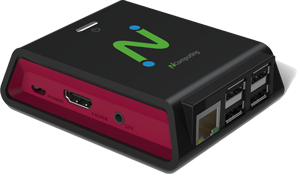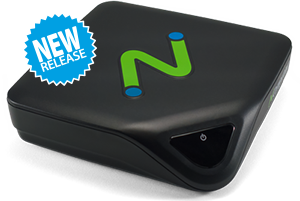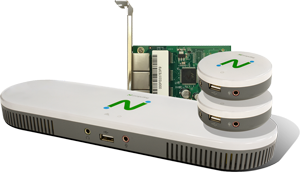A model implementation of computer labs for Mexico and Central America, thanks to the partnership of Microsoft & NComputing.
Coahuila, a state in the Northeast of Mexico, is the country’s third largest. Its principal cities are Saltillo, Torreon and Monclova, and its major center of higher education is the Universidad Autónoma de Coahuila, or UADEC, with an enrollment of 36,000 students and 5,000 professors.

Given the necessity of optimizing its computing structure, UADEC began to search for a model that would achieve this end. As part of this process it contacted Microsoft, which introduced it to NComputing—in this way initiating a relationship between the three parties: UADEC, NComputing and Microsoft.
The first test run took place in the School of Law in November of 2011, and had an immediate impact. “The first thing we at UADEC identified as a benefit of the implementation was the ease of infrastructure standardization,” notes Jesús Félix Martínez, sub-coordinator for institutional support. “The administration of the entire infrastructure was going to be extremely simple. The deployment of the solution was very easy,” he adds.
“Once we had adopted the model, it made a lot of sense for a number of the departments. We then showed it to other departments, and in the School of Administration, for instance, enthusiasm ran so high that they decided on a pilot program with around 50 machines in their computing lab. And the model was very quickly implemented.” They now deliver courses with that tool to 50 students, maintaining complete control of the entire class.
“The project was so interesting, that the Infoteca department, which serves youths who need public access to the Internet, decided to implement it immediately. The L300 terminals now run at Infoteca, and this project is moving full-speed ahead,” affirms Martínez.
Green Factor
The L300 terminals consume a minimum of electricity, only 5W per hour—less than traditional machines. The administration of the servers can represent savings in effort of up to 75%, and a saving in electricity of up to 90%.
“These are green projects that give off less heat in the workspace, because where before a computer was used, now it’s just a small terminal connected to LED monitors—which are also low-consumption. In this manner there has been an optimization of electrical use, and people are very happy because better use is being made of electricity. An immediate impact has been seen, since there are many successful factors associated with this solution,” Martínez points out.
Greater satisfaction among the professors
As Jesús Félix Martínez explains, “In one case at the School of Administration, a professor couldn’t conduct class because only some of the computers worked, and others didn’t. Moreover, she couldn’t hold the attention of her students, as many used the machines to play games or for social networking. With the tools provided by NComputing, the professor took control of the course. She presents an image that appears on every terminal, and in this way it becomes perfectly clear what she is doing. She maintains control of the instrument. Now the professor knows with certainty that her students are getting what they should from the class.”
Fewer failures with the machinery
“The computing centers see that there is a great deal of stability with the equipment and little or no virus infection. The availability and usefulness of the computing infrastructure has increased in a major way. The machines are always ready and available for anyone who needs to use them,” says Martínez.
Goals
A single laboratory with 20 L300 units serves approximately 700 to 800 students. With the 1000 terminals presently in use, 20% of the student body is covered.
“At present we are in the process of implementation. Our goal for the end of 2013 is to arrive at the three main zones of the University—Saltillo, León, and Monclova—and install in each at least one laboratory with 20 terminals. In the long run, we will set up all 52 nerve centers (organizational entities) of UADEC with at least one computing laboratory with a minimum of 20 L300 units,” Martínez concludes.
Success Story
“The great news that we shared at the Microsoft Summit in Miami of the solution provided by NComputing and Microsoft is spreading to areas that we couldn’t have imagined. We are an example for other national and international universities and other businesses that are not university-affiliated, since the problem of standardization, optimal management, and green use is all but universal,” Martínez finished.

-menu.png)





